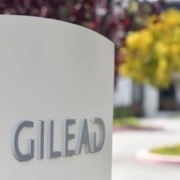VBL becomes latest casualty in heated battle to solve ovarian cancer
VBL becomes latest casualty in heated battle to solve ovarian cancer
By Tristan Manalac
Clinical-stage biotech micro-cap VBL Therapeutics announced Tuesday that its ofranergene obadenovec (ofra-vec) candidate VB-111 failed to meet its primary endpoints in the Phase III OVAL trial for ovarian cancer.
VBL’s stocks took a nosedive following the reveal, with prices dropping around 76% after Tuesday’s closing bell.
OVAL is a randomized and double-blinded trial that compared VB-111 against placebo in more than 400 adults suffering from recurrent, platinum-resistant ovarian cancer. Both treatment arms were also given concomitant paclitaxel.
The ofra-vec candidate was primarily evaluated on its ability to improve progression-free survival (PFS) and overall survival (OS) in study participants—and delivered disappointing results for both measures. Patients treated with VB-111 and paclitaxel had a median OS of 13.37 months, while placebo recipients fared slightly worse at 13.14 months. Meanwhile, PFS in the ofra-vec group was 5.29 months, even slightly worse than the 5.36-month PFS in placebo comparators.
“Given the urgent unmet need for those fighting platinum-resistant ovarian cancer, we are deeply disappointed that the top-line data indicate that ofra-vec did not improve progression free survival or overall survival,” Prof. Dror Harats, M.D., CEO of VBL Therapeutics, said in a statement.
“Based on this outcome, we plan to discontinue the OVAL trial and will review the data from our ongoing Phase 2 trials in metastatic colorectal cancer and recurrent glioblastoma multiforme to determine next steps with the ofra-vec program,” Harats added. “We extend our deepest gratitude to all the patients, families and healthcare professionals who participated in this trial.”
Ovarian Cancer Hits and Misses
Joining VB-111 is Clovis Oncology’s Rubraca (rucaparib), which the company voluntarily withdrew as an approved treatment for BRCA-mutated ovarian cancer patients who had received at least two prior lines of chemotherapy.
This decision, announced quietly through an SEC filing, came after postmarket data analysis revealed that Rubraca led to a higher risk of death in patients taking it as a third- or later-line of treatment, particularly in those resistant to platinum-based regimens.
In the same filing, Clovis also stated that final OS data from its Ariel3 trial showed Rubraca reduced mortality by just under 17% in ovarian cancer patients harboring BRCA mutations. This effect fell short of statistical significance. When looking at all enrolled patients, Rubraca had hardly any benefit, cutting the risk of death by just 0.5%. In 2018, Rubraca’s promising Phase III performance won its FDA approval as a maintenance treatment in this patient population.
Not all is bleak in the ovarian cancer space, however. In March, Corcept Therapeutics revealed that relacorilant, its ovarian cancer candidate, slashed the risk of death by one-third in very sick patients with advanced disease, compared to the current standard of care. These data, obtained from a Phase II randomized controlled trial, are currently being verified in a Phase III study that started earlier this year.
Also in Phase III evaluation is CanariaBio’s oregovomab, which showed in a Phase II study that it could cut the risk of progression and death in half when combined with standard carboplatin and paclitaxel as a front-line regimen. Canaria announced last month that it had achieved 50% enrollment for oregovomab’s Phase III trial.
Meanwhile, PMV Pharmaceuticals also shared encouraging preliminary Phase I/II data from its Pynnacle trial, showing that its candidate PC14586 displayed promising efficacy across different types of solid tumors, including ovarian cancer. PC14586 was also generally safe, with less than 15% of patients manifesting treatment-emergent adverse events.
Further out on the development horizon are Enlivex’s PD-1 combo Allocetera and Anixa’s vaccine adjuvant candidate AddaVax. Both have shown promise in animal studies.
Source: BioSpace

 BioSpace
BioSpace



 Getty Images
Getty Images



